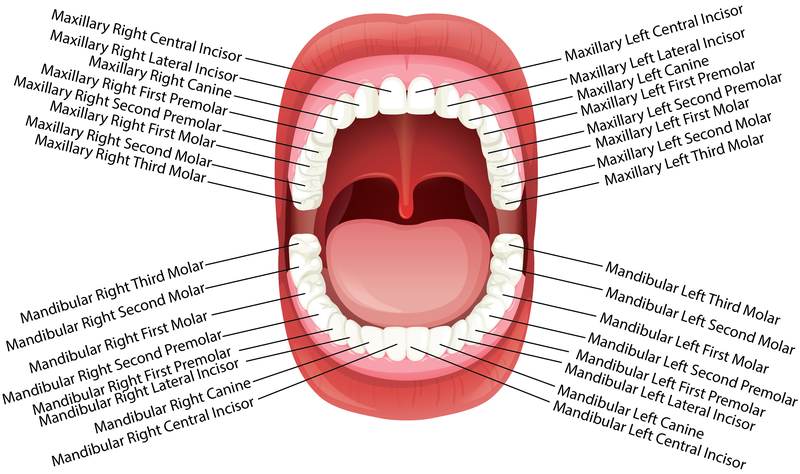Osteogenesis imperfecta
1.1. Basic concepts about teeth
Teeth play a crucial role not only in chewing but also in proper speech articulation and the aesthetic appearance of the face. Changes in tooth colour and position, as well as the absence of dental pieces, can significantly alter facial aesthetics.
Teeth consist of a visible external part known as the crown and a portion embedded in the maxillary bone called the root. In Figure 1, you can identify the different components of the teeth. The crown is protected by dental enamel, a highly mineralised and calcified structure that is exceptionally hard. Its primary function is to safeguard the tooth from erosion and wear. Beneath the enamel is dentin, a substance rich in type I collagen that extends into the maxilla, forming the tooth root. Cementum, a hard layer, covers the dentin at the root level and facilitates the tooth's attachment to the bone. Finally, the innermost part contains the pulp, which houses blood vessels and nerves.

Figure 1. Tooth anatomy (Wikimedia).
The primary dentition, commonly known as "baby teeth" or "milk teeth", emerges during childhood and comprises 20 teeth. As the jaws develop, these primary teeth are eventually replaced by the permanent dentition, which consists of 32 teeth. Different types of teeth can be identified based on their shape, root length, and number of roots:
- Incisors: These are the frontmost teeth, characterized by a chisel-like shape and a single root.
- Canines: They exhibit a more triangular crown shape and possess a longer root.
- Premolars: They feature a crown with two cusps and a single root.
- Molars: These are the largest and rearmost teeth, typically presenting a crown with 4 or 5 cusps and 2 or 3 roots.
The permanent dentition comprises 8 incisors, 4 canines, 8 premolars, and 12 molars (see Figure 2).
